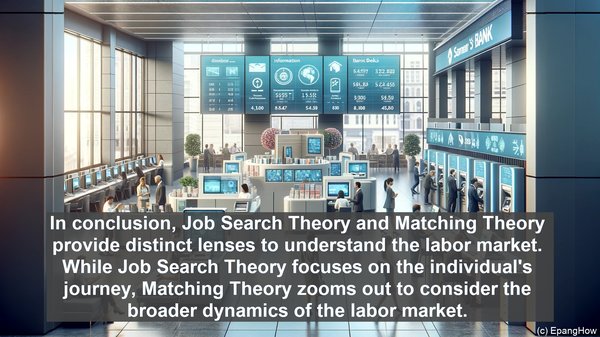Introduction: The Quest for Employment
Hello everyone! In the dynamic realm of labor economics, theories abound to explain the intricacies of the job market. Today, we’ll unravel the differences between two prominent theories: Job Search Theory and Matching Theory. While both theories revolve around the labor market, they offer distinct perspectives on the process of finding employment. Let’s dive in!

Job Search Theory: The Individual’s Journey
Job Search Theory, as the name suggests, focuses on the individual’s quest for employment. It posits that job seekers engage in a deliberate search process, weighing various job opportunities based on their preferences, skills, and market conditions. This theory emphasizes the active role of the job seeker, who analyzes the available options, applies to suitable positions, and undergoes interviews. It also acknowledges the element of uncertainty, as job seekers often encounter information gaps and face the challenge of timing their search effectively.
Matching Theory: The Labor Market as a Puzzle
In contrast, Matching Theory takes a broader perspective, considering the labor market as a complex puzzle. It emphasizes the role of both job seekers and employers in the matching process. According to this theory, successful employment outcomes occur when there is a ‘match’ between the skills, qualifications, and preferences of the job seeker and the requirements and offerings of the employer. This ‘matching’ is not a straightforward process but involves various factors, such as the presence of intermediaries like recruitment agencies, the influence of social networks, and even chance encounters.

Implications: Efficiency and Inequality
The divergent perspectives of Job Search Theory and Matching Theory have implications for the labor market. Job Search Theory, with its emphasis on individual agency, highlights the importance of active job search strategies, continuous skill development, and adaptability. On the other hand, Matching Theory underscores the significance of efficient matching mechanisms, such as well-functioning job boards, networking platforms, and streamlined recruitment processes. However, while these theories offer insights into the labor market, they also raise questions about equity and inequality. For instance, individuals with limited resources or access to networks may face challenges in finding suitable matches, leading to potential disparities.
